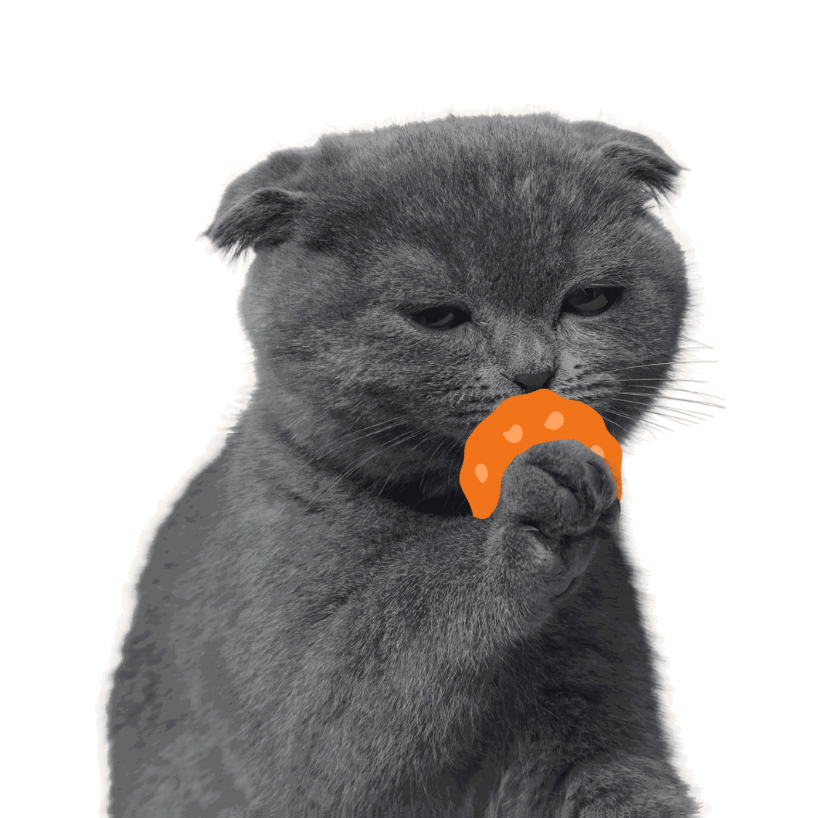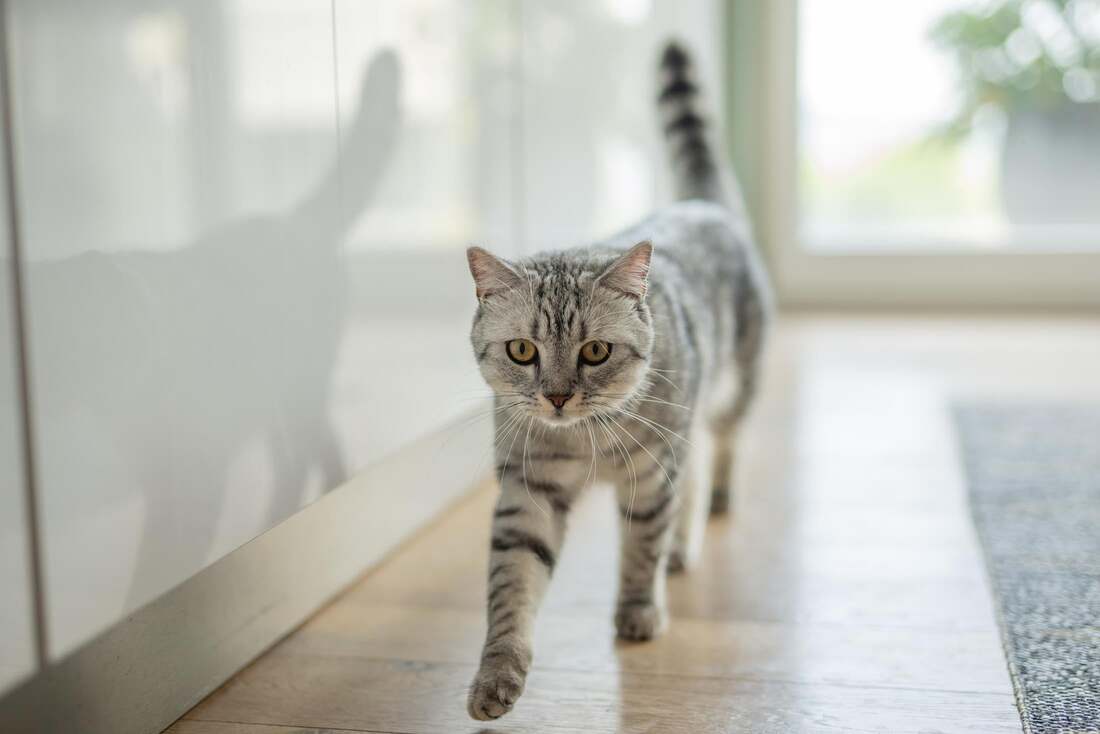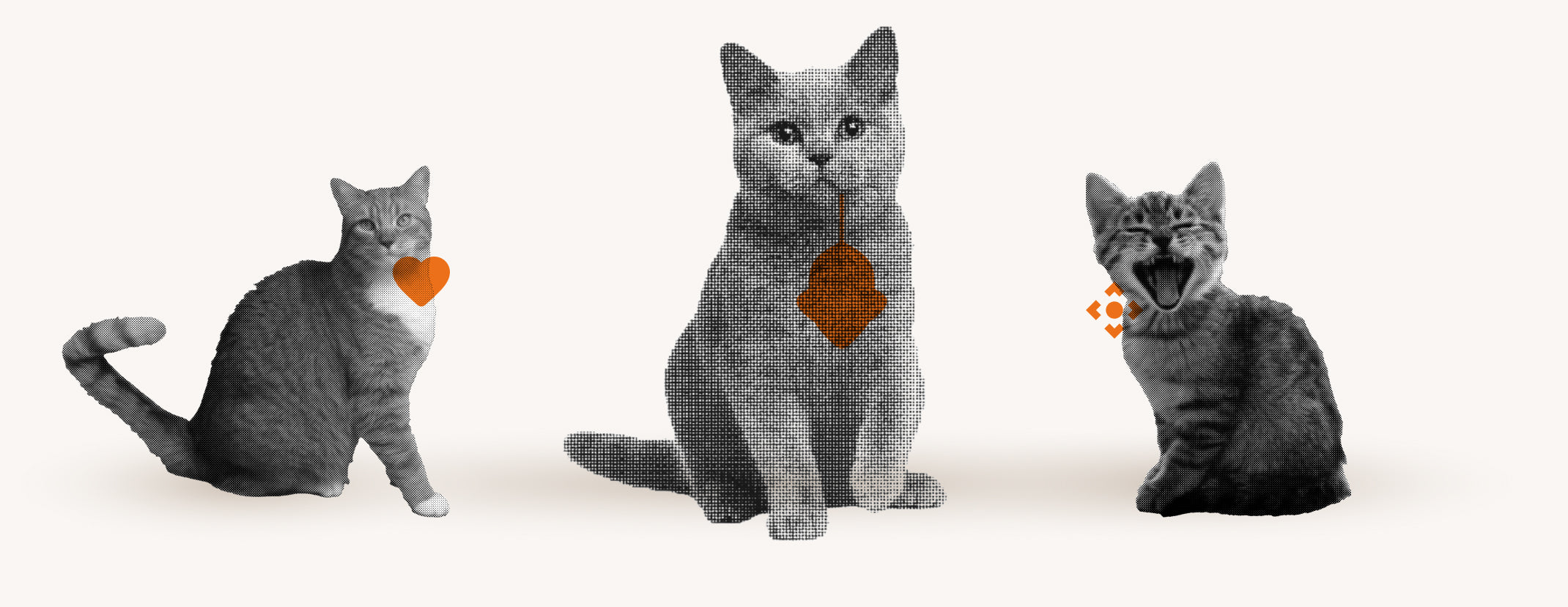You've probably wondered how old your British Shorthair cat can get. Concern about the health and well-being of our furry friends is something we all have in common.
British Shorthair cats are known for their sociable and calm nature and, with good care, can have a life expectancy of over 20 years.
In this blog post, we delve into the world of British Shorthair cats and explore everything there is to know about their age – from developmental stages to tips for a high quality of life at any age.
British Shorthair Life Expectancy: What Can You Expect?

The British Shorthair, often affectionately called BKH, is one of the most popular cat breeds. On average, these velvet paws can reach an age of 12 to 20 years . However, this depends greatly on various factors such as genetics, diet and care. As an owner, you can help ensure that your cat lives a long and healthy life by providing good care.
To maximize the life expectancy of your BKH, there are a few important points to consider:
- Regular veterinary check-ups are essential to detect possible health problems at an early stage.
- A balanced diet contributes to overall health and vitality.
- Sufficient exercise and activity help to avoid excess weight and stimulate the mind.
It is noteworthy that some BKHs can even live to be over 20 years old . While this is not the norm, it shows that with the right care and a loving home, these cats can live to a very old age . Prevention and attention are key components to ensuring your BKH has a long and fulfilling life.
Development phases of a BKH: From kitten to senior age

The development of a British Shorthair (BKH) goes through various phases, ranging from kittens to old age. In the first few weeks after birth, the little kittens are still very weak and dependent on their mother's milk. After about a week, they open their eyes and begin to explore their surroundings. During this time, it is particularly important to pay attention to a balanced diet and the health of the kittens, as their immune systems are still developing.
When kittens reach the third to sixth month of life, an important developmental milestone occurs: the change of teeth. The milk teeth give way to permanent teeth and the kitten continues to develop into a young adult. During this phase, they require special food that is tailored to their increased energy and nutritional needs. Regular visits to the vet are also important at this time to monitor the young cat's health and growth.
After the first year is over, the cats' behavior gradually calms down. They stop growing in size and show the first signs of adulthood , such as the hair around their mouths turning white. In the following years, they continue to develop their personality and strengthen their bond with humans. It is a time when the cat gains many experiences and develops its social skills .
From the age of seven, BKHs are considered seniors. At this age, the first signs of aging, such as increased tiredness or a lack of movement, can appear. An appropriate diet and health care now play an even greater role in maintaining the cat's quality of life and promoting its well-being. This is the time when the long-standing bond between cat and owner is particularly evident.
Physical characteristics of the BKH over time

The physical characteristics of BKHs change significantly over the course of their lives. While kittens gain weight and size rapidly in the first few months of life, they do not reach their full body size until around three years of age . This growth process should not be disrupted by neutering too early, as this can impair growth.
A fully grown BKH tomcat usually weighs between 6 and 8 kilograms , while a cat is usually a little lighter and weighs between 4 and 6 kilograms . In addition to the weight, the texture of the fur also changes. The BKH's fur stands out slightly from the body due to its density and thickness and is particularly easy to care for, except when it is shedding.
As they age, their physical characteristics may continue to change. For example, whitening of the hair around the mouth is the first sign of aging. It is important to keep an eye on the cat's weight, as BCHs can be prone to obesity due to their moderate need for exercise, which increases the risk of heart disease .
BKH tomcat versus cat: Is there a difference in age?

There are some differences in the development of BKH males and females. Males reach sexual maturity about a month later than females. In addition, unneutered males tend to mark their territory and can display more aggressive behavior, while females are more cooperative.
After castration, gender-specific behaviors decrease. Male cats become calmer and show less aggressive behavior. Female cats, on the other hand, may develop a stronger hunting instinct, as they are naturally inclined to care for their kittens.
There are no significant differences between male and female BKHs in terms of life expectancy. Both sexes can reach a lifespan of 12 to 15 years if they are not exposed to hazards such as road traffic and come from a healthy breeding program.
Health and susceptibility to disease in old age

As BCHs age, they become more at risk for a variety of health problems. Chronic kidney disease and hyperthyroidism are two of the most common diseases that can affect older cats. These can affect overall well-being and require early diagnosis and treatment.
Preventive measures such as regular check-ups and an appropriate diet are crucial to maintaining the health of older cats. Arthritis and dental problems are other common age-related diseases that can be prevented by weight control and good dental care.
Responsible management of the cat's health, including regular vaccinations and veterinary visits, is crucial to maximizing life expectancy. Grooming also plays an important role as it promotes blood circulation and helps detect skin problems.
How old is your BKH? Age determination and breed characteristics
There are several methods you can use to determine the age of your British Shorthair (BKH) . Teeth are a good indicator: in kittens, they are sharp and white, while in older cats they may show signs of wear and tear and perhaps even tartar. Behavior also gives clues to age: young cats are often more active and playful, while older cats may have calmer habits.
The breed characteristics of the BKH are also helpful in estimating age. These characteristics include:
- A strong physique with a broad chest and round cheeks
- Short, dense coat that may lose its shine with age
- Large, round eyes that can lose their luminosity over the years These characteristics can change over time and thus provide clues to the age of your cat.
Quality of life at any age: Tips for your BKH

To improve the quality of life of your British Shorthair (BKH) at any age, it is important to understand and respond to their needs . For younger cats, this means a lot of play and exercise to keep them physically and mentally fit. As the cat gets older, the activities should be adapted to the cat's energy and mobility , for example through gentler types of play or shorter play sessions.
Nutrition plays a central role in the health of your BKH. Here are some tips:
- Choose high-quality cat food that is tailored to each life stage.
- Fresh water should always be available.
- Give treats in moderation and count them as part of the daily food ration.
- For older cats, make sure to feed them food that is easily digestible and does not put a strain on the kidneys.
Last but not least, the emotional bond is crucial for your cat's well-being. Regular petting and attention strengthen the relationship and promote the BKH's zest for life . Also make sure to have regular health checks to detect illnesses early and keep your cat's quality of life at a high level.
Record holder: The oldest British Shorthair cat

The lifespan of a British Shorthair cat can be impressive, especially when you consider that some of these cats live well beyond the average age. There are cases where BKHs have surpassed the 20-year mark , making them true record holders of their kind. These exceptions confirm that under optimal conditions, such as a healthy diet , plenty of exercise, and regular vet visits , BKHs can live an astonishingly long life.
What can we learn from the life of the oldest British Shorthair cat? First of all, it shows that genetic predisposition and good care go hand in hand to ensure a long life. Here are some points that can contribute to this:
- A balanced diet that provides all the necessary nutrients
- Regular health checks to detect and treat diseases early
- A safe and loving living space that minimizes stress and promotes well-being These factors play a crucial role in ensuring your BKH lives as long and as healthily as possible.
Frequently asked questions about the age of BKH answered
Many cat owners wonder how old their British Shorthair (BKH) can become. The life expectancy of this breed is on average between 12 and 20 years . However, there are cases where BKHs have even lived to be over 20 years old. This high life expectancy depends on various factors, such as:
- Genetic predisposition.
- quality of nutrition.
- extent and quality of care.
Another common topic is the development of BKHs over the years. BKH kittens grow more slowly than other breeds and do not reach their full size until they are around three to five years old. Over the course of their lives, BKHs go through various stages of development :
- kittenhood (up to about 1 year).
- Young adulthood (1-6 years).
- Mature age (7-10 years).
- Senior age (from about 11 years).
Prevention and health care are particularly important for the health and age of your BKH. Regular visits to the vet help to identify and treat diseases early. You should also ensure that your cat has a balanced diet that is tailored to its age and needs. Important aspects of health care are:
- vaccinations and deworming.
- dental check-ups and care.
- Weight management to prevent obesity.
Nutrition and care: influence on the age of your BKH

A balanced diet is crucial for the health and longevity of your British Shorthair (BKH). High-quality food that is rich in proteins and vitamins supports the immune system and promotes well-being. This is especially important for older cats whose nutritional needs change. Here are a few points to consider:
- Choose food that is appropriate for your cat's life stage.
- Fresh water should always be available.
- Make sure your cat does not become overweight, as this can lead to health problems.
In addition to nutrition, care plays an important role in the life expectancy of your BKH. Regular grooming not only helps to keep the coat shiny and healthy, but is also an opportunity to detect skin problems early. Other important care aspects are:
- Regular check-ups with your vet to detect health problems early.
- Dental care to avoid dental problems.
- Maintain a safe and stress-free environment, as stress can negatively affect health.
Flappie : Intelligent home for your BKH
Are you the owner of a British Shorthair cat and want to create a safe and intelligent home for your furry friend? Flappie offers an innovative solution: the intelligent cat flap . This flap is not just a passage for your cat, but a real guardian of your home. Here are some of the benefits that Flappie has in store for you and your BKH:
- Selective access control that prevents your cat from bringing unwanted prey into the house.
- Prey detection through camera and AI technology that ensures that only your cat - and nothing else - gets access.
- An app that informs you about your cat's activities, provides you with videos and photos, and allows you to adjust settings while on the go.
Frequently Asked Questions
How old can a British Shorthair cat get?
A British Shorthair cat, often affectionately called a BKH, can reach an average age of 12 to 20 years. However, there are cases where BKHs even live beyond 20 years. Life expectancy depends on various factors, such as genetic predisposition, quality of diet and amount and quality of care.
What diseases are BKH susceptible to?
As BCHs age, they become more at risk for a variety of health problems. The most common diseases that can affect older cats include chronic kidney disease and hyperthyroidism. Other common age-related diseases include arthritis and dental problems. These health problems can affect overall well-being and require early diagnosis and treatment.
When do British Shorthairs calm down?
After the first year is over, the behavior of British Shorthair cats gradually calms down. They no longer grow in size and show the first signs of adulthood. In the following years, they continue to develop their personality and strengthen their bond with humans.





Share:
Cat with short legs: Everything about the Munchkin breed
Norwegian Forest Cat vs. Main Coon – A Comparison